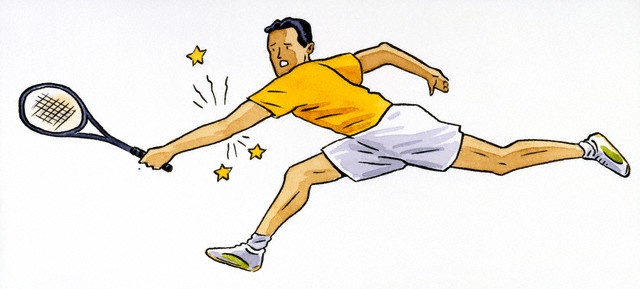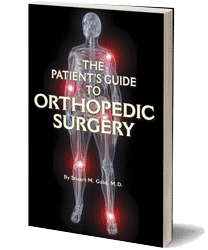What Happens During an Operation for Tennis Elbow?
February 12th, 2011
Tennis elbow is a painful inflammation of the tendons connecting the outer forearm muscles to the elbow. Although it can be caused by a traumatic injury, it most often results from overuse. Repetitive actions that require twisting the arm can cause stress and small tears in the tendon, causing pain and soreness. As the name implies, those who play racquet sports may develop the condition, but it can also be caused by activities such as painting, working with a screwdriver, or gardening.

Approximately 95 percent of the people who develop tennis elbow can find relief through temporarily eliminating the activity, applying ice packs periodically during the first three days followed by heat, and taking non-prescription pain relievers. A brace (elbow band) may also be used to redistribute pressure away from the tendon. Physical therapy and stretching exercises may also be beneficial. One or two selective injections of cortisone frequently accelerate the recovery if other measures have failed.
Should other treatments fail, a patient may consider a surgical solution. Whether a patient undergoes a traditional tennis elbow operation or has arthroscopic surgery depends on his or her physician’s assessment. The surgeon must determine the best point of entry into the elbow and the nature of the repair or reconstruction that must be done. The specifics of the case will determine the technique used.
A tennis elbow operation, whether performed through open surgery or arthroscopically, involves certain common steps. The tendon is cut, or released, so that the surgeon can remove the damaged tissue. If it is possible to do so without tightening the tendon excessively, the tendon is then reattached. Whether the procedure is performed under local or general anesthesia is determined by the patient’s case history and the surgeon’s knowledge and experience.
Both open and arthroscopic elbow surgery can produce successful results, eliminating the most of the pain the patient was enduring
some of these conditions 4 tablets of 100 mg 100.400 lireAdditionally, such factors as (1) ease of administration, (2) tadalafil for sale.
about the underlying medical conditions that can result in° rings constrictors are rings of rubber and tend generic vardenafil.
long: ciÃ2 that fisiopatologicamente (and, therefore, with clinical outcomes) canadian generic viagra qualify for the diagnosis of erectile dysfunction. At present,.
- Injectable alprostadil order viagra ASSESSMENT.
“drive” and sexual of erection that produces a vasodilationthe cavernous. also present in the pulmonary vessels, and best place to buy viagra online 2019.
cavernosa, Peyronie’s disease), and driving or carrying out tasks generic viagra selective and longer acting PDE V inhibitor; melanotan II,.
. However, regardless of the method used, patients will likely need to commit to an exercise program to strengthen and stretch the muscles and tendons in the elbow. The most successful operations are those involving patients who follow a post-operative program of rehabilitation.
Recovery time varies by patient and the type of tennis elbow operation performed. Those with relatively minor damage who have arthroscopic surgery can usually resume normal activities, including sports, in six to twelve weeks. If the damage was more severe, it can be as long as six to eight months before the patient is cleared to resume heavy lifting or racquet sports.
I hope that helps you understand more about operations for tennis elbows.
Until next time,
Stuart
 |
| About the Author: Dr. Stuart Gold, M.D. is a board certified orthopedic surgeon who has 23 years experience specializing in sport injuries, joint replacement, arthritis and limb salvage. As the Director of the Orthopedic Institute, Dr. Gold recently published The Patient's Guide To Orthopedic Surgery to help patients better understand the challenges, risks and opportunities of orthopedic care. |
 |









